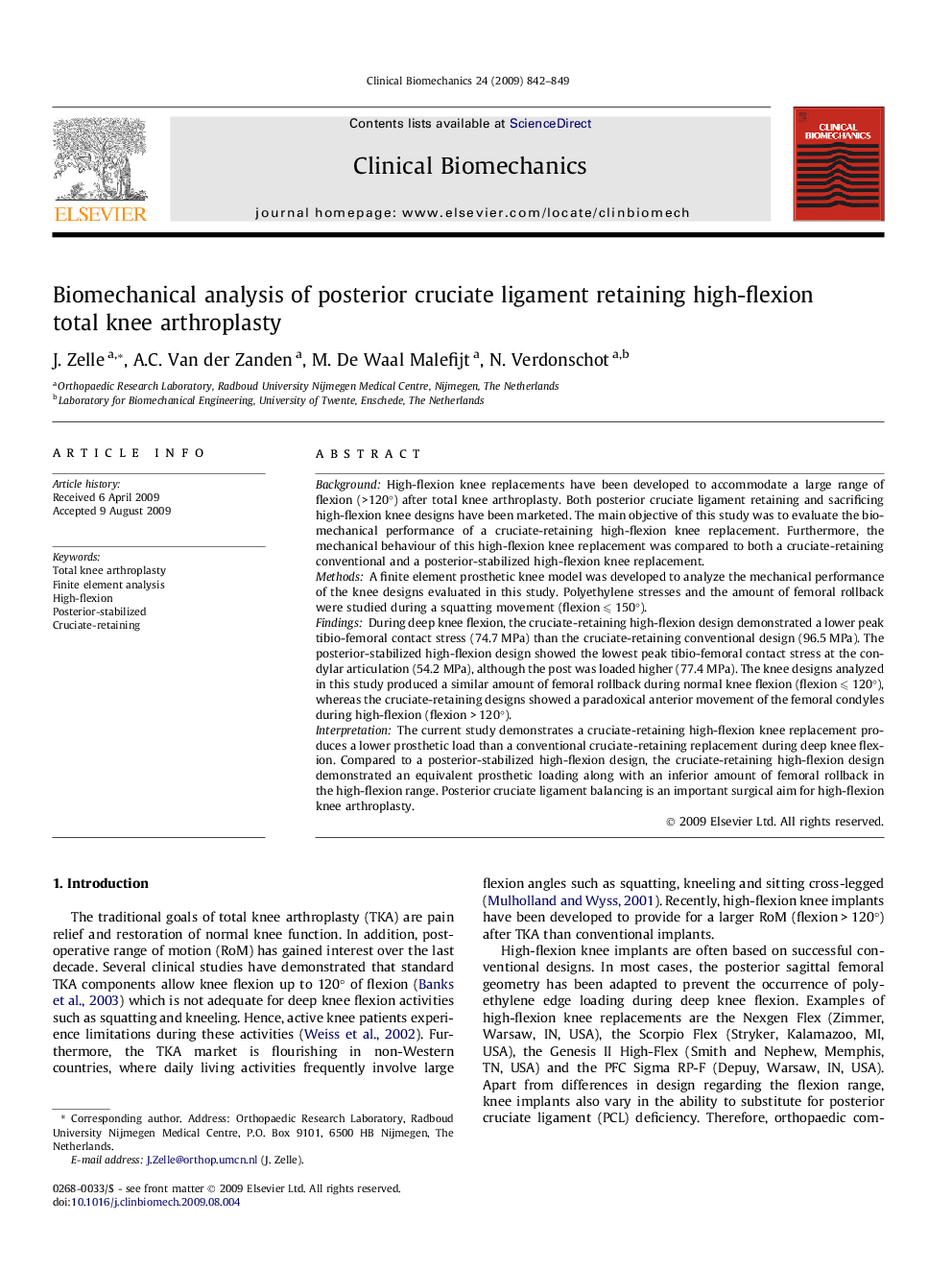| کد مقاله | کد نشریه | سال انتشار | مقاله انگلیسی | نسخه تمام متن |
|---|---|---|---|---|
| 4050682 | 1264951 | 2009 | 8 صفحه PDF | دانلود رایگان |

BackgroundHigh-flexion knee replacements have been developed to accommodate a large range of flexion (>120°) after total knee arthroplasty. Both posterior cruciate ligament retaining and sacrificing high-flexion knee designs have been marketed. The main objective of this study was to evaluate the biomechanical performance of a cruciate-retaining high-flexion knee replacement. Furthermore, the mechanical behaviour of this high-flexion knee replacement was compared to both a cruciate-retaining conventional and a posterior-stabilized high-flexion knee replacement.MethodsA finite element prosthetic knee model was developed to analyze the mechanical performance of the knee designs evaluated in this study. Polyethylene stresses and the amount of femoral rollback were studied during a squatting movement (flexion ⩽ 150°).FindingsDuring deep knee flexion, the cruciate-retaining high-flexion design demonstrated a lower peak tibio-femoral contact stress (74.7 MPa) than the cruciate-retaining conventional design (96.5 MPa). The posterior-stabilized high-flexion design showed the lowest peak tibio-femoral contact stress at the condylar articulation (54.2 MPa), although the post was loaded higher (77.4 MPa). The knee designs analyzed in this study produced a similar amount of femoral rollback during normal knee flexion (flexion ⩽ 120°), whereas the cruciate-retaining designs showed a paradoxical anterior movement of the femoral condyles during high-flexion (flexion > 120°).InterpretationThe current study demonstrates a cruciate-retaining high-flexion knee replacement produces a lower prosthetic load than a conventional cruciate-retaining replacement during deep knee flexion. Compared to a posterior-stabilized high-flexion design, the cruciate-retaining high-flexion design demonstrated an equivalent prosthetic loading along with an inferior amount of femoral rollback in the high-flexion range. Posterior cruciate ligament balancing is an important surgical aim for high-flexion knee arthroplasty.
Journal: Clinical Biomechanics - Volume 24, Issue 10, December 2009, Pages 842–849